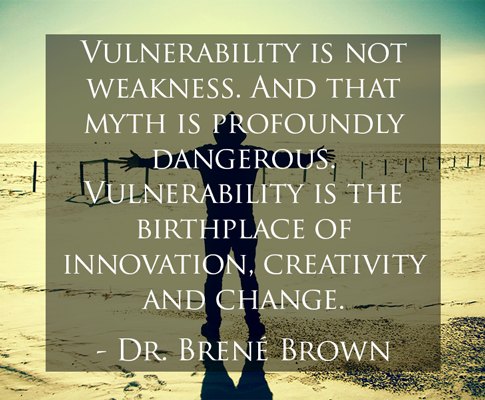“I’ll never let that happen again.”
Amidst all of life’s slings and arrows, we learn to put up our shields to protect ourselves. We do this to get through situations when we feel attacked, but if we leave our shields up we close ourselves off. We galvanize ourselves in a way that prevents us from learning, changing and growing.
We trust someone and they hurt us, so we no longer trust as easily.
We try something new and it backfires, so we go back to our comfort zone.
We share our art with others and get negative feedback, so we keep it to ourselves next time.
Our brains naturally try and avoid pain in order to protect our existence. Self-preservation is essential in life or death scenarios. But we’re people, not jam. We don’t need to be preserved indefinitely. In order to experience what it means to be human, we have to take emotional and mental risks, even when it means inevitably experiencing pain.
If we let it, our emotional posture will stunt our growth.
Vulnerability is not weakness. And that myth is profoundly dangerous. Vulnerability is the birthplace of innovation, creativity and change.
– Dr. Brené Brown
Brené Brown’s definition of vulnerability is not one of weakness, but of strength (here are some videos of her explaining this). I find it helpful to think about vulnerability as a posture. If you are too protective, you could be closed off to the world around you.
If you are in a closed posture, you…
- … keep your head down
- … watch closely where you walk
- … hold your arms in to protect your heart
- … are sure to not make contact with anyone or anything
- … ultimately make yourself smaller
If you are in an open posture, you…
- … hold your head high
- … see farther and can notice more opportunities
- … are more free to use your arms and hands in helping others
- … are able to connect more easily with others and build rewarding relationships
- … are able to grow
It can be scary to walk through each day with an open posture (especially after getting sucker punched). But if we decide our solution to life’s hard lessons is to “never do that again,” we may miss incredible opportunities to see something beautiful born out of our willingness to be vulnerable.

